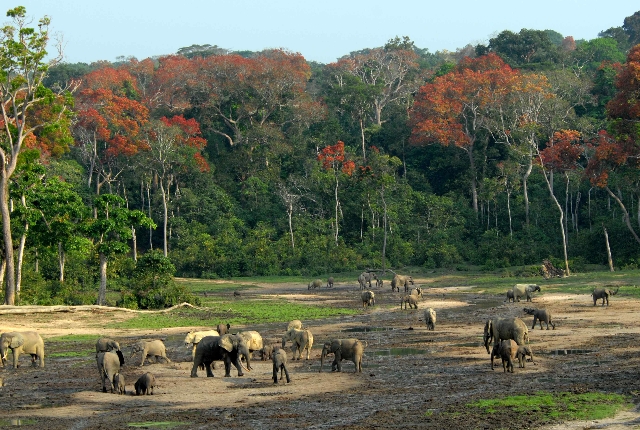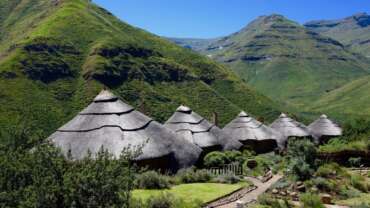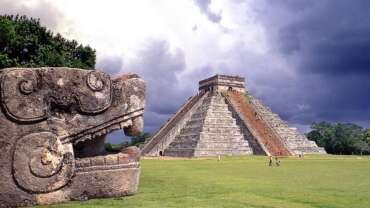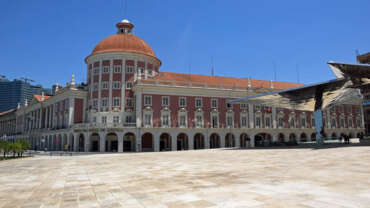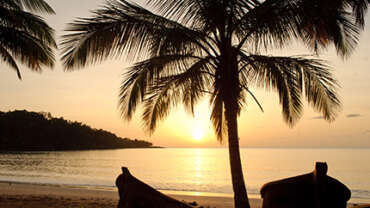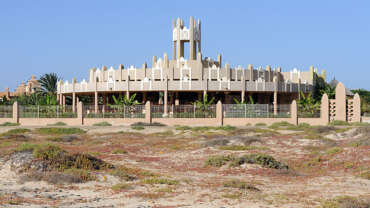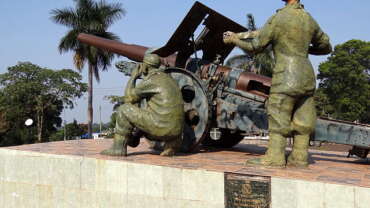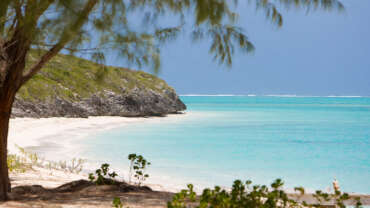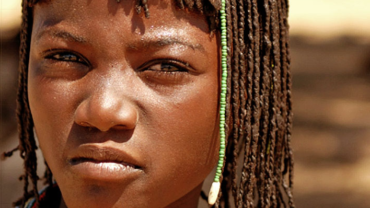Central African Republic
Central African Republic, landlocked country located in the centre of Africa. The area that is now the Central African Republic has been settled for at least 8,000 years. The earliest inhabitants were the probable ancestors of today’s Aka (Pygmy) peoples, who live in the western and southern forested regions of the country. The slave state of Dar al-Kuti occupied the northern reaches until the various regions of the Central African Republic were brought under French colonial rule late in the 19th century. Colonial administrators favoured some ethnic groups over others, resulting in political rivalries that persisted after independence in 1960.
Following periods of civil strife and dictatorial government, including the infamous regime of the self-styled Emperor Bokassa I (who renamed the country the Central African Empire), the country embarked on a course of democracy that was threatened, at the end of the 20th century, by interethnic civil war in neighbouring countries as well as by attempted coups d’état. Weary of social chaos and shifting allegiances among contending elements of the power elite, the country’s citizens quote a regional proverb, “When elephants fight, the grass suffers; when elephants make love, the grass still suffers.”
The capital city of Bangui, founded as a French trading post in 1889, sprawls on the banks of the Ubangi River. Famed in colonial times as one of the most agreeable cities in equatorial Africa, Bangui blends wooded hills and grassy meadows with heavily populated shantytowns, a handsome if now somewhat run-down city centre, and modern residential districts. Though strikes and curfews often bring the city to a standstill, Bangui enjoys a vibrant nightlife and a diverse musical culture.
History of Central African Republic
Early History
Diamond prospectors in the Central African Republic have found polished flint and quartz tools that are at least 8,000 years old. About 2,500 years ago local farmers set up megaliths weighing several tons each near Bouar. The cooperation necessary to make and position these monuments suggests that they were built by fairly large social units. By the 15th century CE various groups speaking languages related to those of the present day were living in the area. These peoples lived in relatively isolated small settlements, where they hunted and cleared land for cultivation using the slash-and-burn method. The region also produced such states as Dar al-Kuti, Zande, and Bandi, all founded in the 19th century.
The region of the Central African Republic was not directly connected to external commercial routes until the 17th century. At that time, slavery became an important factor in Central African history as Arabic-speaking slave traders extended the trans-Saharan and Nile River trade routes into the region. Before the mid 19th century these slave traders’ captives were sent to North Africa, where they were eventually sold to countries such as Egypt or Turkey or down the Ubangi and Congo rivers to the Atlantic coast to slave ships that transported them to the Americas.
Later in the mid 19th century the Bobangi people from the Ubangi River area, who had become major slave traders, raided the nearby Baya and Mandjia peoples for captives. In exchange for captives, the slave traders received arms, which allowed them to continue to raid for more slaves. Though these raids largely ended by the end of the century, they continued in the north until 1912 when Dar al-Kuti fell. The slave trade disrupted the societies in its wake and depopulated the region. It also created lasting tensions between ethnic groups. The ruling elite is still resented today by many in Central Africa because they tend to come from riverine groups akin to the Bobangi.
The colonial era
During the last two decades of the 19th century, Belgium, Great Britain, Germany, and France competed for control of equatorial Africa. Belgium, Germany, and France each wanted the region that would eventually become the Central African Republic. The French were ultimately successful and named it the French Congo (later French Equatorial Africa), with its capital at Brazzaville. The French colonies included Ubangi-Shari (Oubangui-Chari; which later became the Central African Republic), Chad, Gabon, and the Middle Congo (which became the Republic of the Congo).
The French government leased large tracts of land to private European companies in order to avoid paying for the development of its Central African possessions; it also placed few controls on their activities. In exchange for an annual rent, these firms exploited the land and dominated the people. Company overseers forced both men and women to gather wild rubber, hunt for ivory and animal skins, and work on plantations. Unable to cultivate their own fields because of the labour demands from European companies, they experienced food shortages and famine. Because they were forced to work in new environments where they were exposed to sleeping sickness, new strains of malaria, and other diseases, the death rate substantially increased.
By the beginning of the 20th century, frontiers had been established for the Ubangi-Shari colony by the European powers. Many Africans resisted French control, and several military expeditions in the first decade of the century were needed to crush their opposition. The Kongo-Wara rebellion (1928–31) was a widespread, though unsuccessful, anticolonial uprising in the western and southwestern parts of the colony. After it was suppressed, its leaders were imprisoned and executed and populations of Central Africans were forcibly relocated to colonially designated villages where they could be supervised.
The French colonial administration did create a network of roads and a mobile health system in Ubangi-Shari to fight disease, and Roman Catholic churches set up schools and medical clinics. However, the French also used the Central Africans for forced labour to increase the cultivation of cotton and coffee, as well as of food crops to supply French troops and labour crews. The French conscripted Central Africans and sent them to southern Congo to construct the Congo-Ocean Railway, which linked Congo to Pointe-Noire.
During World War II French Gen. Charles de Gaulle called on the residents of the colonial territories to help fight the Germans, and 3,000 responded from Central Africa. After the war these troops returned to their homeland with a new sense of pride and a national, rather than ethnic, identity. After the war de Gaulle organized the French Union and created new local assemblies—consisting of French colonists and a handful of Africans—with regional political representatives. In November 1946 Barthélemy Boganda became the first Central African elected to the French National Assembly.
People of Central African Republic
Ethnic groups
The people of the Central African Republic range from the hunting-and-gathering forest Pygmy peoples, the Aka, to state-forming groups such as the Zande and Nzakara. Prior to the arrival of Europeans in the late 19th century, distinctions between different groups were highly fluid. Many thought of themselves as members of a clan rather than of a broader ethnic group. Interactions with those who spoke different languages and had different cultural practices ranged from peaceful trade and intermarriage to war and enslavement.
The attempts by colonial administrators and ethnographers to divide Central Africans into definite ethnic groups have never been viable. However, French colonizers did promote ethnic and regional distinctions among their Central African subjects. Drawing from populations of such southern riverine people as the Ngbaka (Mbaka), Yakoma, and Ubangi, the French helped to create an elite group, which emerged as an indigenous ruling group for the whole country and has held most political positions since independence. Regional affiliations have increased the complexity of this political terrain. Other, nonriverine Central Africans, who are far more numerous, have tended to resent this situation and have occasionally taken leadership roles themselves. Although people living in the country’s northern regions have gained more political power since independence, southern peoples still remain an important presence in national politics.
A minority of Greek, Portuguese, and Yemeni traders are scattered around the country, and a small French population lives in Bangui. Diamond traders from western Africa and Chad, merchants from various African countries, and refugees from nearby countries, such as the Democratic Republic of the Congo, also reside in Bangui and the hinterlands.
Languages
Central Africans currently speak a wide variety of languages, including Baya (Gbaya), Banda, Ngbaka, Sara, Mbum, Kare, and Mandjia. French and Sango are the official languages. Sango is a lingua franca spoken by nearly nine-tenths of the population. It was originally the language of a people from the Ubangi River region, but Christian missionaries adopted, simplified, and disseminated it in the 1940s and ’50s to their followers throughout the country.
Religion
Roughly four-fifths of the population professes Christianity; there is a sizable minority of unaffiliated Christians, while Roman Catholics, Protestants, and independents constitute the rest. About one-tenth of the population continues to practice traditional religions. There is a growing number of Sunni Muslims. A small minority declares no religious affiliation.
Cultural Life of Central African Republic
Daily life and social customs
In most Central African families, women continue to play a crucial role in the gathering, production, conservation, distribution, and preparation of food. Hunting, trapping, and fishing—male occupations—remain important for the subsistence of many Central Africans, and women in some regions fish during the dry season. The production of such commercial crops as coffee, cotton, and tobacco tends to be chiefly a male activity, but women are the principal food producers for household consumption. Staple foods include cassava, rice, squash, pumpkins, and plantains, which are usually served with a sauce and grilled meat. Okra (gombo) figures in almost every meal, and peanuts and peanut butter appear in many dishes and add protein. Game is popular, as are the fish-based dishes called maboké and soussou. Beer, palm wine, and banana wine are made locally, and ginger beer is a popular soft drink.
Churches are important in both rural and urban life, constituting major centres of not just religious activity but also social interaction. In addition to Sunday services, religious schools and various fellowship groups for women, men, adolescents, and children are common. Church members frequently gather after worship services for a ndoye (Sango: “gift”), a celebration with singing and dancing to honour a notable church member. Members bring food, soap, and kerosene to the honoree, who, in turn, serves coffee, tea, and a light snack.
Holidays are also important in the Central African Republic. In addition to the big celebrations held for Christmas and New Year’s, December 1—known by various names, including National Day, Proclamation Day, and Republic Day—is important. This day commemorates the proclamation of the republic in 1958. Other holidays include Labour Day (May 1) and the anniversary of the death of President Barthélemy Boganda (March 29).
The arts and cultural institutions
Until the 19th century, artisans in the region produced many fine handmade items. The slave trade and the early years of colonization disrupted the expansion of crafts, however, and most of them disappeared. Today woven mats and baskets, simple wooden utensils, carved stools, pottery, and musical instruments, including the balafon (much like a xylophone but constructed of animal horns, skins, and wood), are all that remain of older handiwork. More recently, handicraft workers have begun producing unique designs and pictures made from butterfly wings glued to paper and some ebony and other tropical hardwood carvings. Drawing upon earlier traditions, contemporary artists are producing carvings of animals and people, and many are available in larger towns, as well as at Bangui’s artisans’ market.
The Central African Republic is also home to remarkable displays of song and dance. The Aka of the southwestern forests have received international attention for their music and dance, and several troupes have traveled to Europe to perform. In Bangui and some regional towns, Central African musicians have formed such dance bands as Musiki, Zokela, Makembe, Cool Stars, Cannon Stars, and Super Stars. These musicians play their own unique version of electrified Congolese music, in which African rhythms and languages are combined with the rumba, cha-cha, and merengue. One Central African type of music, called Zokela, named after a band from the 1980s, has become a dynamic musical form associated with the Lobaye region. It melds elements of village ceremonies with contemporary urban sounds and has influenced many Bangui bands.
Few works of literature from Central Africa have been published, but collectors still gather traditional oral legends and folk stories from older villagers. These histories and tales, some dating to the 19th century, remain a rich reserve of historical and cultural identity. The storytellers grip their listeners with lively call-and-response songs and chants in their narratives, bringing together both young and old listeners.
Sports and recreation
Football (soccer) is the most popular recreational pastime for young Central Africans. Even the smallest village usually has a football field, and villages, churches, and schools often sponsor teams for both boys and girls. Both men’s and women’s teams have taken part in international competitions. Basketball and rugby are also widely played, especially in Bangui. Central African athletes have participated in the Olympic Games since 1968.
Top Attractions & Places in Central African Republic
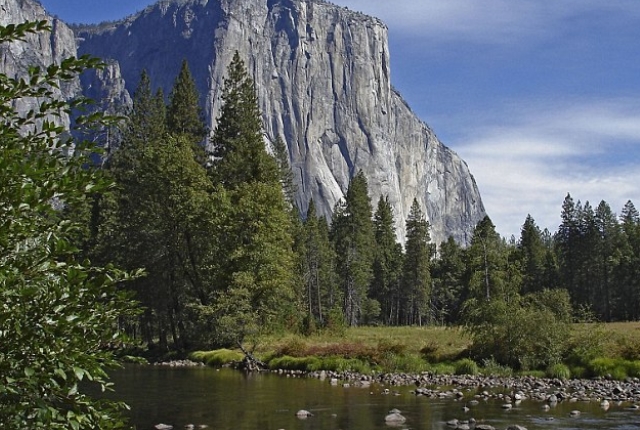
The Central African Republic is arguably the richest country in the world when it comes to natural beauty and diversity of wildlife but in terms of money, the country is one of the world’s poorest. Landlocked between several other war torn countries and facing its own difficulties with poachers, military violence and general lawlessness, travel to the Central African Republic is strongly discouraged. The history of the country is, like most on the African continent, tarnished by the colonization by Europeans, the remnants of which can still be seen in some of the main cities.
The country does however have its charms which come in various shapes and sizes ranging from rare butterflies to gorillas and elephants. There is nowhere on earth that is more suitable for safaris and lovers of wildlife however even with such natural assets such as these the countries tourism cannot thrive due to its political problems.
The country is one of the least developed in the continent and even the world but the people of the country mostly remain friendly and honest.



